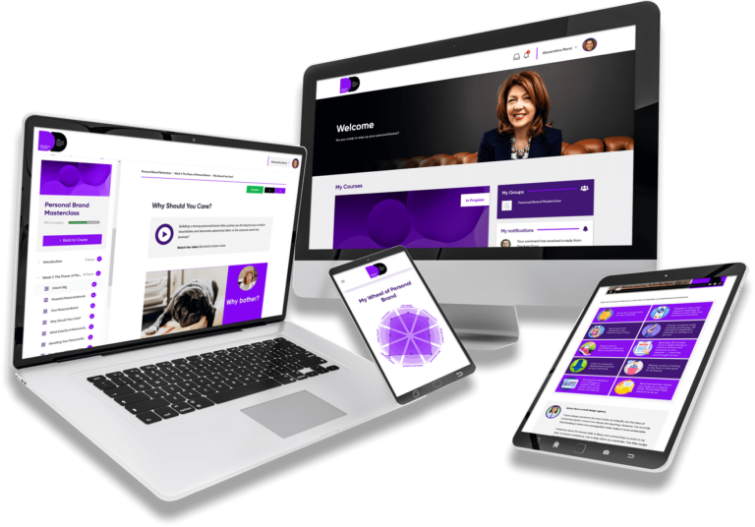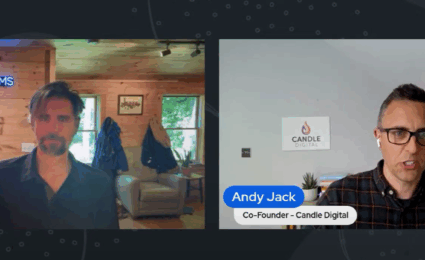How design thinking can help you build a better training product and service

We’re big fans of innovative ways to approaching business challenges – regular readers of our blog will know we’re fans of the value proposition canvas and business model canvas in particular.
Recently we’ve been paying a lot of attention to design thinking, which has recently become something of a hot topic. We’ve been learning about this through the Interactive Design Foundation and we have also found ourselves lucky enough to attend a session through RTC North in Huddersfield which really helped crystalise our thoughts on this.
So what is design thinking, and how could it help training providers?

The process of design has a specifically systematic approach which can be used for any challenge. It’s a human-centred approach which can help us solve problems creatively and innovatively.
At it’s core, design thinking is intended to go beyond the surface level of issues. That means developing a deep understanding of those who will use the product and service.
For training providers, naturally, a big focus will be on the people who are taking the training course. However, it’s also important to consider others involved, such as the client who has commissioned the training in the first place and any other stakeholders. They are likely to have their own challenges which should be considered as part of the solution.
This seems logical and intuitively makes sense – the better understanding you have of a person and their challenges, the better product or service you can create to help them overcome this challenge. Putting the ‘user’ at the heart of the design process is hardly novel, but framing the approach this way does provide a heightened sense of focus and keep it ‘front of mind’!
So how do we get beyond the ‘surface level’?
Design thinking advocates building empathy for the target user, for which there are many techniques. This could be as simple as asking really good questions, conducting interviews and focus groups.
[biteable]https://giphy.com/embed/3ubqmFn2F7ytq[/biteable]
A more adventurous approach might constitute a ‘people safari’ – essentially observing your audience in their everyday situations (with an increased focus on the context they are in when they encounter the challenge you are looking to help with). The aim is to walk in someone else’s shoes so you can experience their problems first-hand, and use this information to design a solution.
Your aim should be to fall in love with the problem, and not treat it on face value. Is what people are telling me the real problem? What other factors are at play?
Without a depth of understanding, you may be inadvertently baking in assumptions into your design, which could ultimately yield poor results.
What happens next?
Once you’ve framed the problem, it’s time to start prototyping and testing your solution through ongoing experimentation. Only by putting a prototype of your product or service in front of people can you really get feedback and understand the fit. You can also use this as a way of getting buy-in from potential customers early doors Developing products in isolation limits how accurately they will be shaped.
From a training perspective, this may be doing trials or showcases in the workplace on your new training design. If you’re finding it hard to find willing participants, ask yourself if you are communicating this well, or are you building a solution to a problem that doesn’t exist? Work through your value proposition to test your thinking on this.
The job isn’t over once you’ve developed your solution, you should be constantly iterating and sense-checking that is providing as much impact as possible.
How this could work in practice
So let’s take an example of a typical training provider. Typically the first thing a training provider would do is a “training needs analysis”. The first red flag with this is the immediate description of the solution to the problem as training. Now pragmatically, you may have been requested by your client to deliver training as a way of solving an organisational challenge. But even if this is the remit, you should dive deeply into the problem and consider all the solutions for a couple of reasons.
Firstly, from a reputational perspective, delivering training that will have little impact (even if the course is ‘great’) isn’t going to help you in the long run. Secondly, by understanding the wider situation at play, you may be able to provide complementary services that could increase the impact of your interventions.
Take Resilient People, for example, one of our clients based in Pontefract, West Yorkshire. They recognised that developing a sense of wellbeing and resilience has to come from the person themselves, rather than simply a top-down approach from managers. And while training courses delivered in the workplace can act as a catalyst for change, this needs to be backed up with tools and resources that can be called upon at any time to support the face-to-face training sessions.
Furthermore, some of the people needing support could be on building sites or away from a desk, as such it was important to ensure resources were accessible at any time, from any place. The Resilience Hub is a reflection of these considerations.
So if you’re a training provider, use design thinking to:
-
- Think more broadly about the organisational challenges your audience is faced with. Is training the only solution? Typically it’s a part of a solution, but not the only part. With that in mind, how can you use your solution to complement other solutions?
- Fall in love with your audience’s problem. Develop a strong understanding of the challenges your audience faces, and the reasons why, and you’ll be able to craft better products and services.
- Get to know the audience, and understand them deeply. Create a persona or avatar you can stick up on your wall to help you keep this front of mind.
- Have a go at the design thinking canvas. This will help you sketch your idea (and try and work with someone else (ideally your client!) on this)
We’d love to hear how you get on!
(Credits: Photo by Sean Whang)
Fresh Insights Direct to Your Inbox
Enjoyed this article?
Join the Candle Digital Mailing List
You’ve Mastered Your Craft. Now Scale It.









